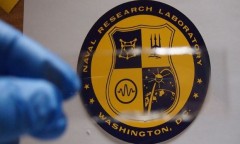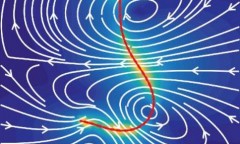By Arthur Dominic J. Villasanta , | March 24, 2017

MFP in action (concept drawing).
The U.S. Defense Advanced Research Projects Agency (DARPA) in May will launch a new program aimed at protecting U.S. troops and equipment from the growing threat posed by programmed suicide aerial drones packed with explosives.
DARPA's Mobile Force Protection Program (MFP) focuses on neutralizing suicide drones -- essentially flying bombs -- that aren't controlled by radio frequencies, as is frequently the case with unmanned aerial vehicles (UAVs). MFP aims to find ways to detect bomb-laden kamikaze drones that don't rely on radio frequencies.
Like Us on Facebook
"Right now, the best way of detecting that there is an unmanned airplane is by listening for that radio signal," said J.C. Ledé, who leads the MFP program.
"Once they stop emitting that radio signal, they're going to get a lot harder to find."
The main focus of MFP is going beyond electronic jamming to stop UASs weighing up to 90 kilograms. MFP focuses on defending moving convoys of U.S. troops, a task more complex than defending a stationary target.
DARPA is soliciting the assistance of private firms and the academe to help it push forward with the tougher than expected challenged facing MFP.
The anti-drone program plans to build an agile and mobile aerial drone-defense system that can defeat attacks by self-guided, small UAVs against important targets such as troop and supply convoys.
Up for grabs is a $63 million project that must defend against radio-controlled and GPS-guided weaponized UAVs, and also against future UAVs that navigate by visual means in large groups.
These future drone swarms can either be used to gather intelligence or to simultaneously attack priority targets. Some of these drones will carry weapons such as air-to-ground missiles while others will be "kamikaze" drones that explode on hitting their targets.
Of particular interest to DARPA is a system ability to counter relatively small fixed-wing or helicopter UAVs weighing less than 90 kg. An MFP system must be able to integrate new approaches and technologies quickly, and work on ground vehicles, surface vessels and aircraft.
-
Use of Coronavirus Pandemic Drones Raises Privacy Concerns: Drones Spread Fear, Local Officials Say

-
Coronavirus Hampers The Delivery Of Lockheed Martin F-35 Stealth Fighters For 2020

-
Instagram Speeds Up Plans to Add Account Memorialization Feature Due to COVID-19 Deaths

-
NASA: Perseverance Plans to Bring 'Mars Rock' to Earth in 2031

-
600 Dead And 3,000 In The Hospital as Iranians Believed Drinking High-Concentrations of Alcohol Can Cure The Coronavirus

-
600 Dead And 3,000 In The Hospital as Iranians Believed Drinking High-Concentrations of Alcohol Can Cure The Coronavirus

-
COVID-19: Doctors, Nurses Use Virtual Reality to Learn New Skills in Treating Coronavirus Patients











